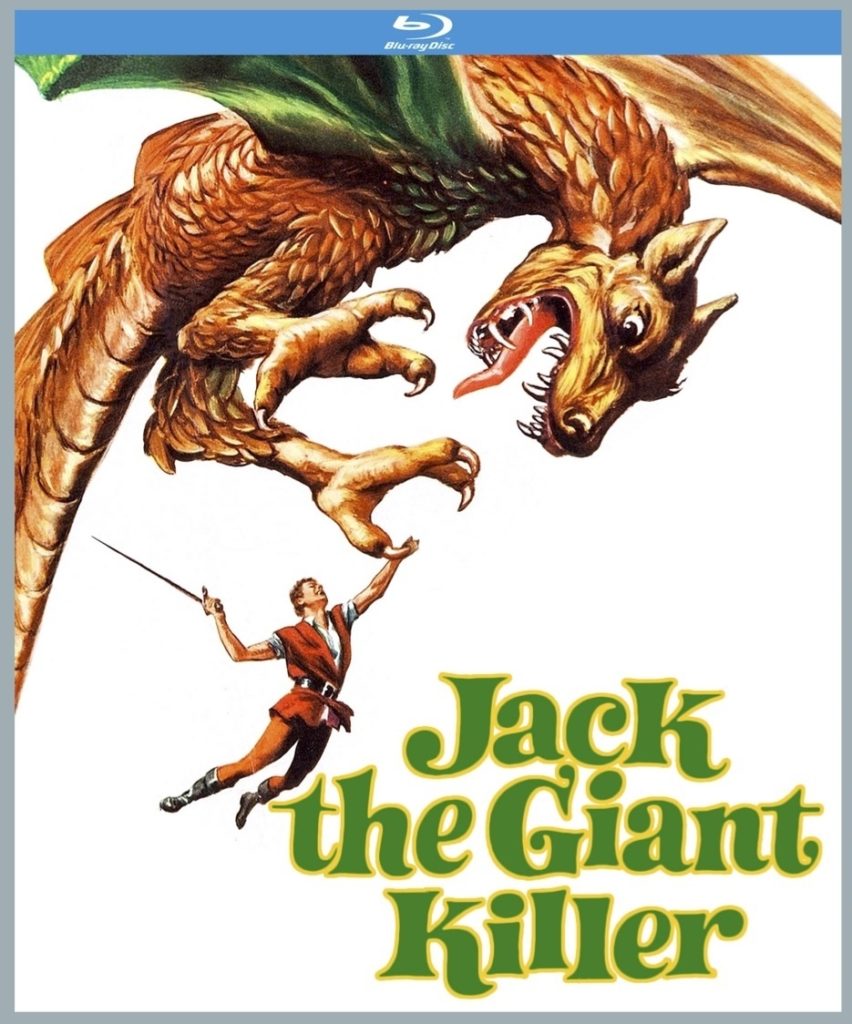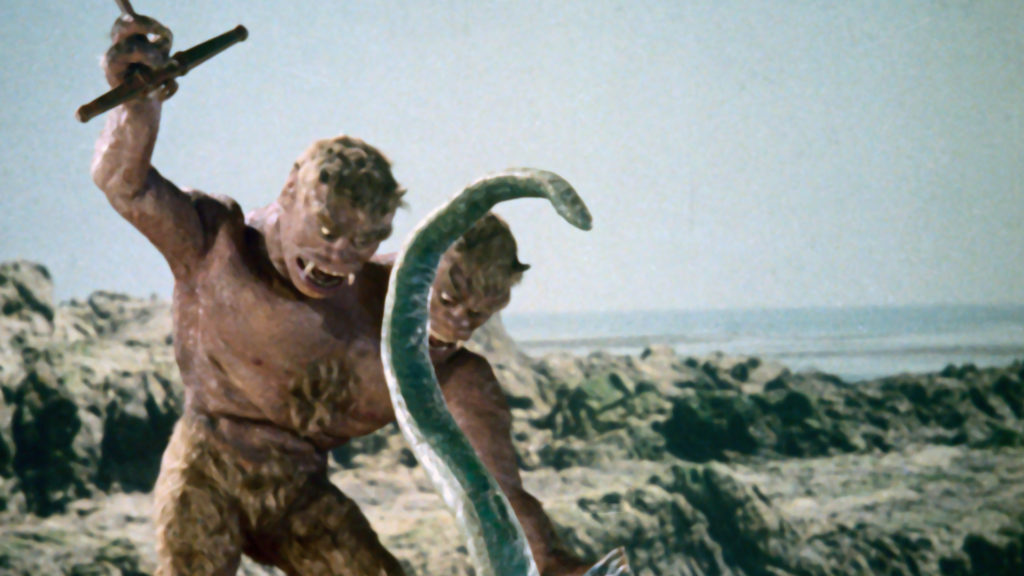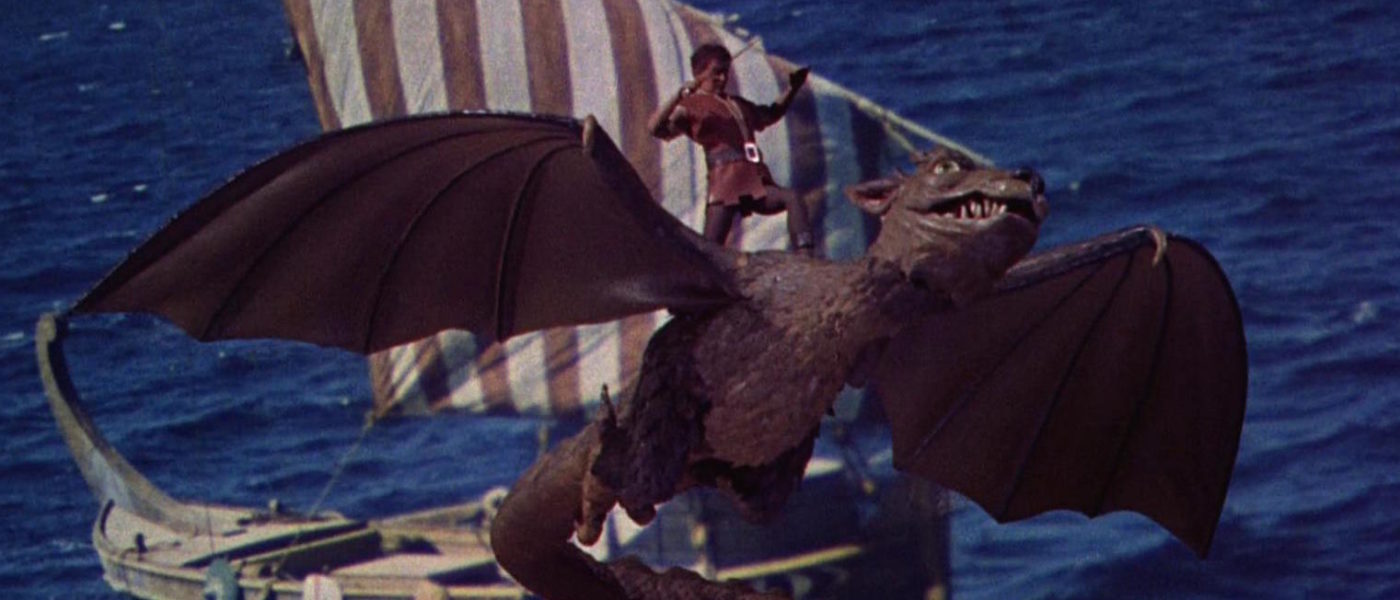Effects Not So Special, And Its Own Worse Rip-Off To Boot
JACK THE GIANT KILLER/DIRECTED BY NATHAN JURAN/1962
STREET DATE: JUNE 12, 2018

If you’re not watching this movie with your kid-hat on then you’re doing it all wrong. Yes, the special effects are depressing, the stop-motion animation is woefully sub-Harryhausen, there’s an occasional spattering of flatly cel-animated “magic” lights and spells, and the wardrobe looks suspiciously costume shoppy. But, with all my sentimentality happily resting downsleeve, the spirit of adventure, heroism, and fantasy are there if you open your heart to them. Never mind that it’s a blatant rip-off of Harryhausen’s and Charles H. Schneer’s far superior The 7th Voyage of Sinbad (1958), with which it shares not only a damningly similar story, but a director (Nathan Juran), a lead actor (Kerwin Mathews), a bad guy played by Torin Thatcher, and the lumbering appearance of a giant, horned, cloven-hooved monster that’s slain without prejudice by our hero.
Despite these sins, the sameness is refreshingly deliberate: producer Edward Small openly wished to replicate the success of the Harryhausen adventure, but got so close it drew a lawsuit, which itself sparked a bizarre reaction from Small: he re-edited the thing into a kid-friendly musical. That version’s included on the disc as an extra and it’s virtually unwatchable, with its newly-cast, children’s-book opening credits and its after-the-fact musical numbers, fashioned not from newly shot footage, but from an egg scramble of trims, cheap and obvious opticals, flipped shots, repeated shots, grotesquely jarring slo-mo shots, and shoehorned cutaways. One previously menacing bad-guy sequence is, with unflappable confidence, presented with re-recorded voices singing the original dialogue, the whole thing reconstituted as a bouncy ditty.

These and other moments are never more than objects of curiosity, or more likely derision, for those familiar with the original non-musical, but they have their inadvertent merits: the chintzy sets, the overly bright colors, and the broad characterizations of the film as intended lend themselves handily to the musical genre, so it’s not a total loss. Luckily, these days, anyone who remembers the movie probably isn’t recalling the musical recut, as the original eventually became the de facto version for TV presentations and revivals…but Kino Lorber brings it to us again anyway as a keepsake of misplaced Hollywood hubris, or else a flop-sweaty two-step to recoup at least a little lost treasure.
Ever the giver of knowledge-rich commentary tracks, film historian Tim Lucas guides us through a respectful tour of this harmless misfire, whose dragon sequence toward the end looks like a deleted scene from the Island of Misfit Toys. Ultimately, while the film’s inception rested on crass opportunism, there’s still a sweet center, and it never really gets much more offensive than a pesky, stop-motion fly buzzing around Harryhausen’s head.


